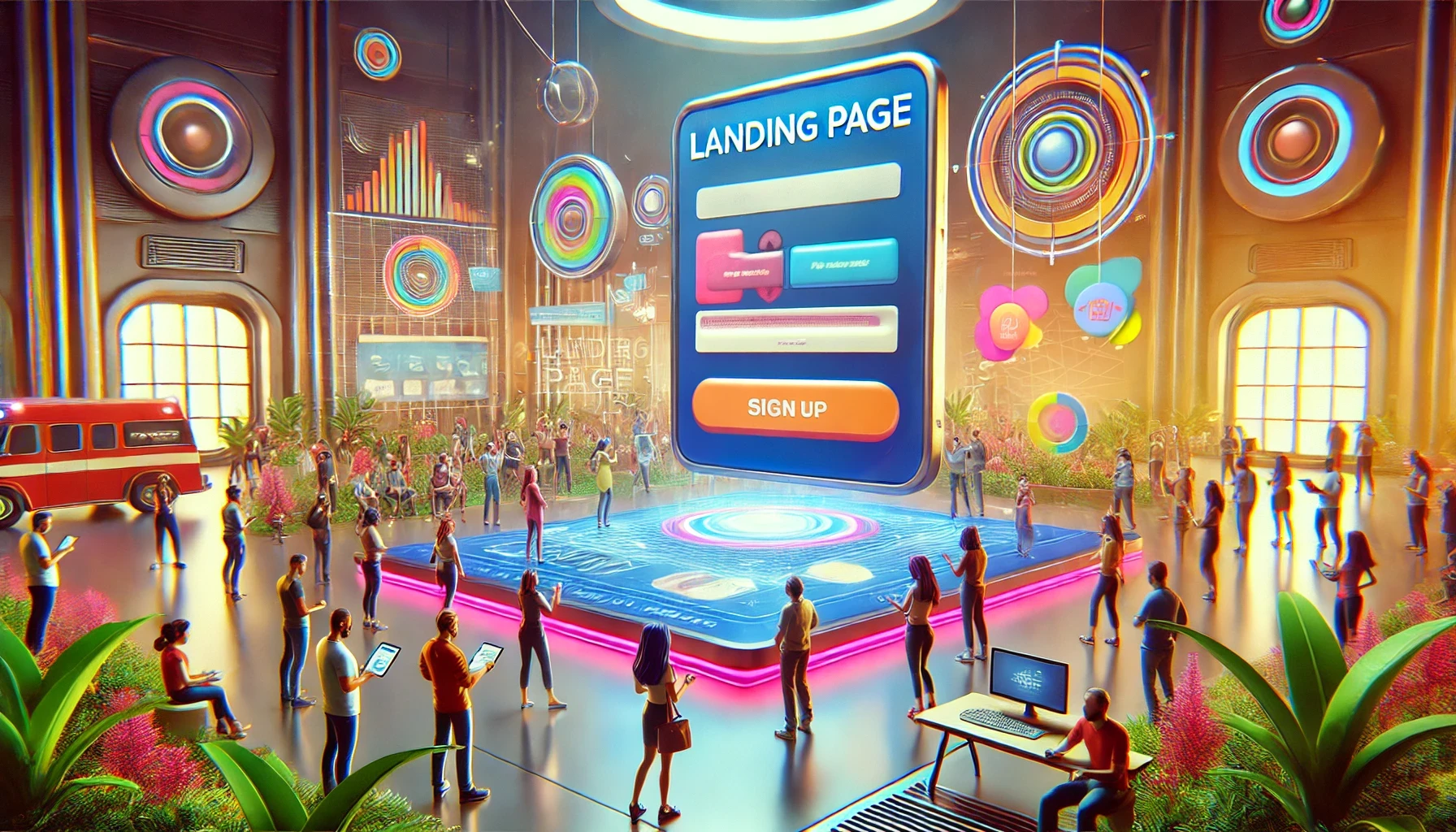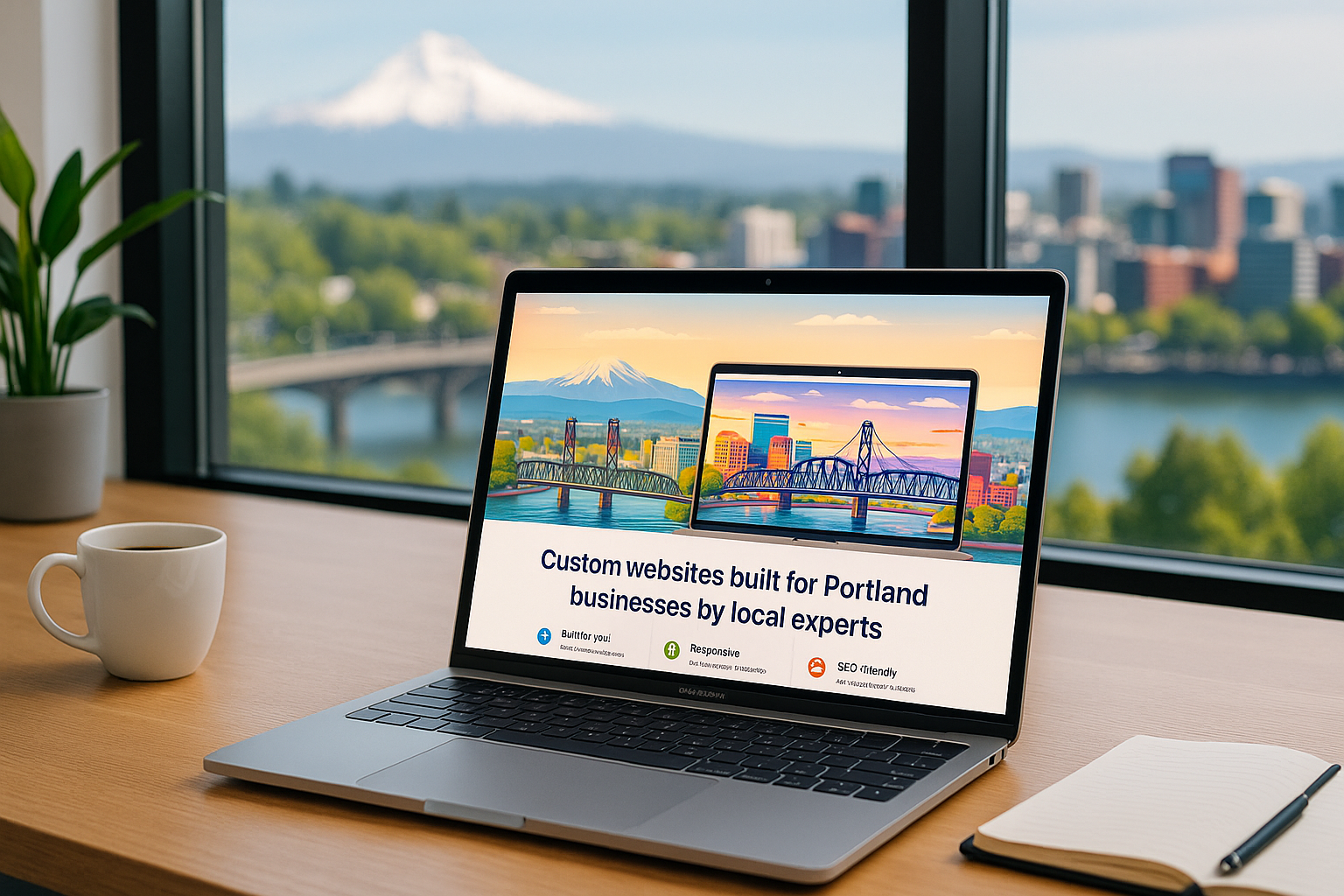In today’s digital landscape, your landing page is often the first—and sometimes the only—point of contact between your brand and potential customers. A well-crafted landing page can captivate an audience, build trust, and drive conversions. Whether you’re launching a new product, running a marketing campaign, or simply looking to boost your online presence, understanding the nuances of landing page development is essential.
In this guide, we’ll delve into what makes a landing page effective, explore best practices for design and content, and look at actionable tips to ensure your landing pages convert visitors into loyal customers.
What is a Landing Page and Why Does it Matter?
Unlike a traditional homepage, a landing page is designed with one primary goal: conversion. It’s a focused environment where every element—from headlines to call-to-action buttons—works together to guide visitors toward a specific action. This could range from signing up for a newsletter to purchasing a product or downloading a resource.
A successful landing page isn’t just visually appealing; it’s optimized for usability, performance, and relevance. With competition online fiercer than ever, the ability to capture attention and steer users toward conversion can make all the difference in your campaign’s success.
Key Elements of an Effective Landing Page
- Clear and Compelling Headline
Your headline is the first thing visitors see. It should succinctly convey your value proposition and grab attention. A great headline sets the stage for the rest of your content and instantly communicates what your offer is all about. - Strong, Focused Call-to-Action (CTA)
Every effective landing page has a CTA that stands out—be it a button or a simple text link. The CTA should clearly state the intended action and be supported by persuasive copy that explains the benefits. Use colors and positioning that make the CTA unmissable. - Minimalistic and Consistent Design
Clutter is the enemy of conversion. A minimalistic design helps guide visitors’ eyes toward the most important elements. Keep navigation limited to avoid distractions, and ensure that the design reflects your brand’s identity. Focus on clean lines, sufficient white space, and visual hierarchy for ease of comprehension. - Persuasive, Benefit-Driven Copy
The language on your landing page should be direct, relatable, and centered on the visitor’s needs. Instead of simply listing features, emphasize the benefits and outcomes your audience can expect. This copy, combined with supporting visuals, creates a narrative that resonates. - Trust Signals and Social Proof
Include elements such as testimonials, client logos, certifications, or awards. These not only build credibility but also assure visitors that your offer is reliable, increasing overall trust. - Responsive and Fast-Loading Design
With an increasing number of users accessing the web on mobile devices, responsive design is non-negotiable. Optimize your landing page for various screen sizes and ensure quick load times to reduce bounce rates. Every second counts when nurturing interest.
Best Practices for Landing Page Development
- Define a Singular, Focused Goal
Every element on your landing page should point to a single conversion goal. Whether it’s signing up for a webinar or purchasing a product, avoid mixing multiple CTAs that could confuse visitors. - Keep It Simple
Less is more when it comes to converting visitors. Remove extraneous content and focus on vital information that supports your conversion goal. A clean layout encourages users to focus on the message. - Use High-Quality Visuals and Clear Branding
Invest in quality imagery or illustrations that complement your message. Visuals should guide visitors and reinforce your brand identity without overshadowing the content. - Align Your Messaging
Consistency matters. Ensure that the message in your ads, email campaigns, or social media posts aligns seamlessly with your landing page content. This creates a cohesive user experience that builds trust and clarity. - A/B Testing is Essential
No landing page is perfect the first time. Experiment with different headlines, CTAs, and layouts. Use A/B testing to gather data on what works best and optimize your design accordingly. Refine your page based on real user feedback and analytics. - Optimize for SEO
While landing pages are primarily built for conversions, they also need to be discoverable. Incorporate targeted keywords, meta tags, and optimized images to enhance search engine visibility without compromising on user experience.
Common Pitfalls to Avoid
Even seasoned marketers and developers can make mistakes. Here are some pitfalls to steer clear of:
- Overwhelming the Visitor:
Avoid overcrowding the page with excessive text, images, or links. A focused approach ensures that visitors aren’t distracted from the main conversion goal. - Unclear or Weak CTAs:
If your call-to-action isn’t compelling or easy to find, even the best-designed landing page won’t convert. Always prioritize the CTA in your design hierarchy. - Inconsistent Messaging:
Mismatched messaging between your promotional material and your landing page can lead to visitor confusion and reduced trust. Ensure a seamless experience from ad to landing page. - Slow Loading Speed:
A delay of even a few seconds can significantly impact your conversion rates. Optimize images, use streamlined code, and choose reliable hosting to ensure fast load times.
Tips for Continuous Improvement
Building an effective landing page is an iterative process. Here are some tips for ongoing optimization:
- Monitor Analytics Regularly:
Use tools like Google Analytics to track visitor behavior and identify bottlenecks in the user journey. - Collect User Feedback:
Direct feedback can provide invaluable insights into areas that need improvement. Consider surveys or heatmaps to understand visitor interactions better. - Keep Up with Trends:
Digital design standards and user preferences evolve quickly. Stay informed about current best practices in landing page development and adopt changes as needed. - Stay Agile:
The best landing pages are never static. Continually test different design elements, messaging, and offers to keep your page fresh and relevant.
Conclusion
Landing page development is both an art and a science. It requires a deep understanding of user behavior, solid design principles, and a relentless drive to optimize for conversions. By focusing on clear messaging, user-friendly design, and continuous improvement, you can transform your landing page into a powerful tool that drives real results.
Begin by implementing these best practices and watch as your conversion rates climb. Whether you’re a seasoned marketer or just starting out, the journey to developing the perfect landing page is one of experimentation, data-driven decision-making, and creative thinking. Happy developing!



